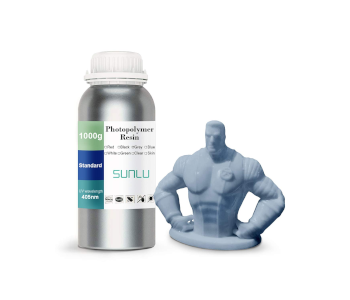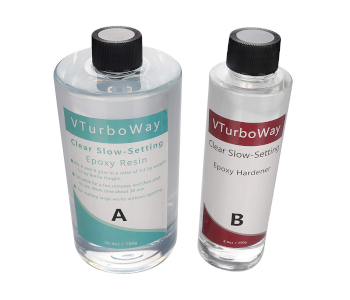Anyone who has spent time 3D printing with resin is familiar with this situation – having bottles of leftover resin that are just not enough to complete a new project. This can be quite a nuisance, especially if you end up hoarding several bottles of near-empty bottles of resin.
With all these different resins around, the important question is – can they be mixed together and used for 3D printing? The short answer is yes, they can be mixed together. However, you may want to know what you’re going into before doing something so experimental.
Is mixing 3D printing resins safe?

If done correctly, mixing resins should be perfectly safe. Although resin is chemically reactive, mixing of resins should not create a chemical reaction that will pose a safety hazard.
However, make sure to practice the usual safety standards when handling resin while mixing. Wear gloves and eye protection, and try to have as little skin exposure as possible. You will also want to lay down some old newspapers over your working area, as pouring and mixing resin has a high chance of causing some spillage.
It is not advised to mix resin directly on the vat of your 3D printer. Undesirable byproducts from the mixing process may contaminate the vat and cause quality issues. Mixing your resin in a separate container works best.
Which resins should you mix?
The common piece of advice is to only mix resins that are similar. This can pertain to the brand of the resin or its characteristics, such as curing time, strength, flexibility, or color. This is good advice for when you want to be able to anticipate how the mixed resin will behave during printing and after curing.
However, this does not mean that resins of different brands, colors, or characteristics cannot be mixed. Experiments with different resin combinations is actually quite common in the resin printing community. Not all combinations may work, so experimenting works best for leftover resin that you have no practical use for anyway.
Expect some unpredictability

When mixing different 3D printing resins, there will inevitably be some experiment and trial and error involved. The quality and performance of the combined resin can be unpredictable.
However, it’s possible to approximate the characteristics of the combined resin with some deductive reasoning. If you’re mixing different colors, you may end up with a combined color, a grayish complex, or several colors occurring in spots and streaks.
Mixing different resins is also a good way to tweak the physical characteristics of the finished print. Are you finding that one specific resin is too brittle? Then mix it with a small portion of a more flexible resin to make it a little more robust. This is also a great way to expand the capabilities of your resin printing setup without having to buy new resin.
Combining resin to get the exact characteristics you’re after can be tough, and will likely take a long time to master. If there is a specific property you’re looking for, there is a good chance that there is already a pre-made resin that works perfectly for your needs. Experimenting is fun, but it’s not the most reliable method if you’re looking for predictable results.
Final thoughts
Dealing with leftover resin can be a bother, so it’s good to know that they can be combined and used just as you would any 3D printing resin. Just keep in mind that there will definitely be an element of uncertainty in how the combined resin will behave during printing.
Combining different resins is a good way to finally get rid of those near-empty bottles in your resin cabinet. You might even be pleasantly surprised with the results.
The post Can Different 3D Printing Resins be Mixed Together? appeared first on 3D Insider.







Leave a Comment